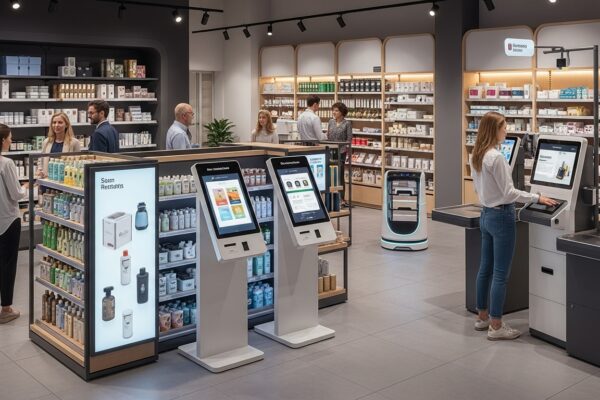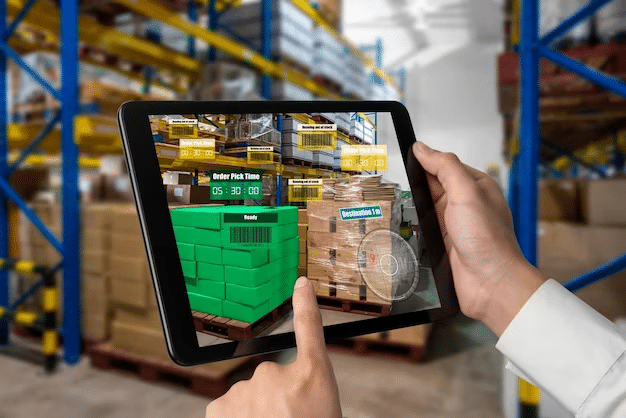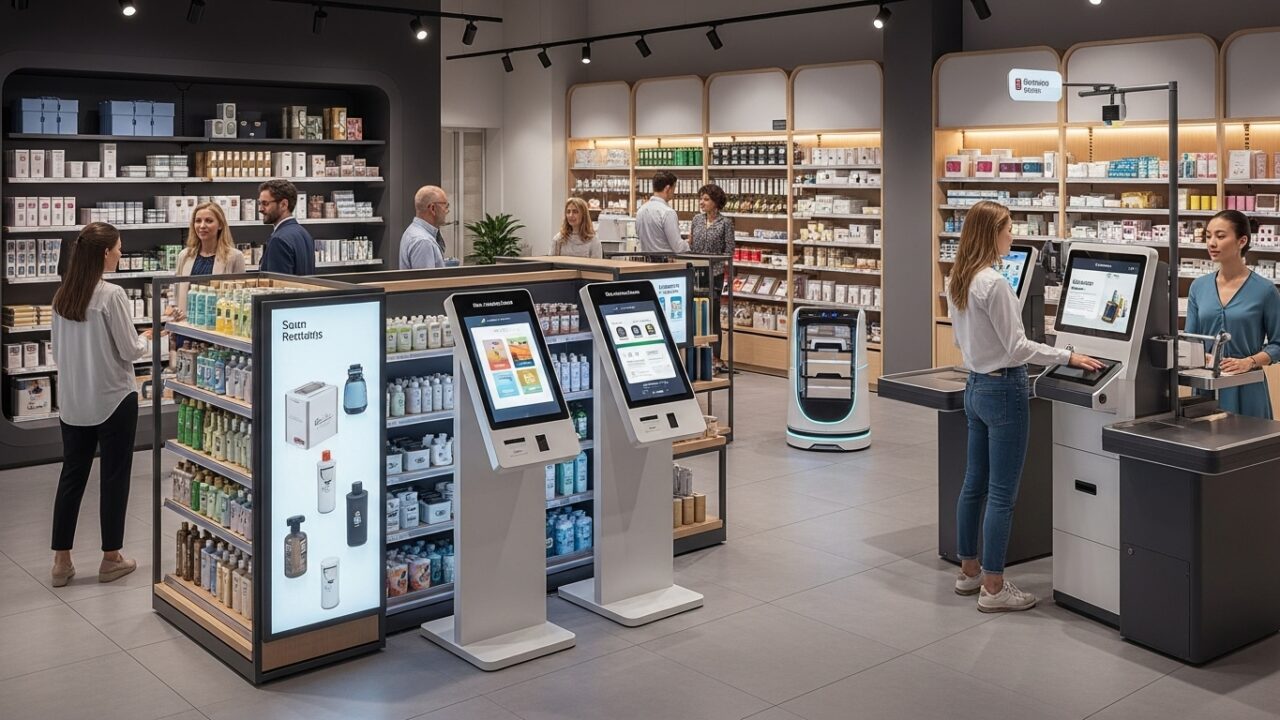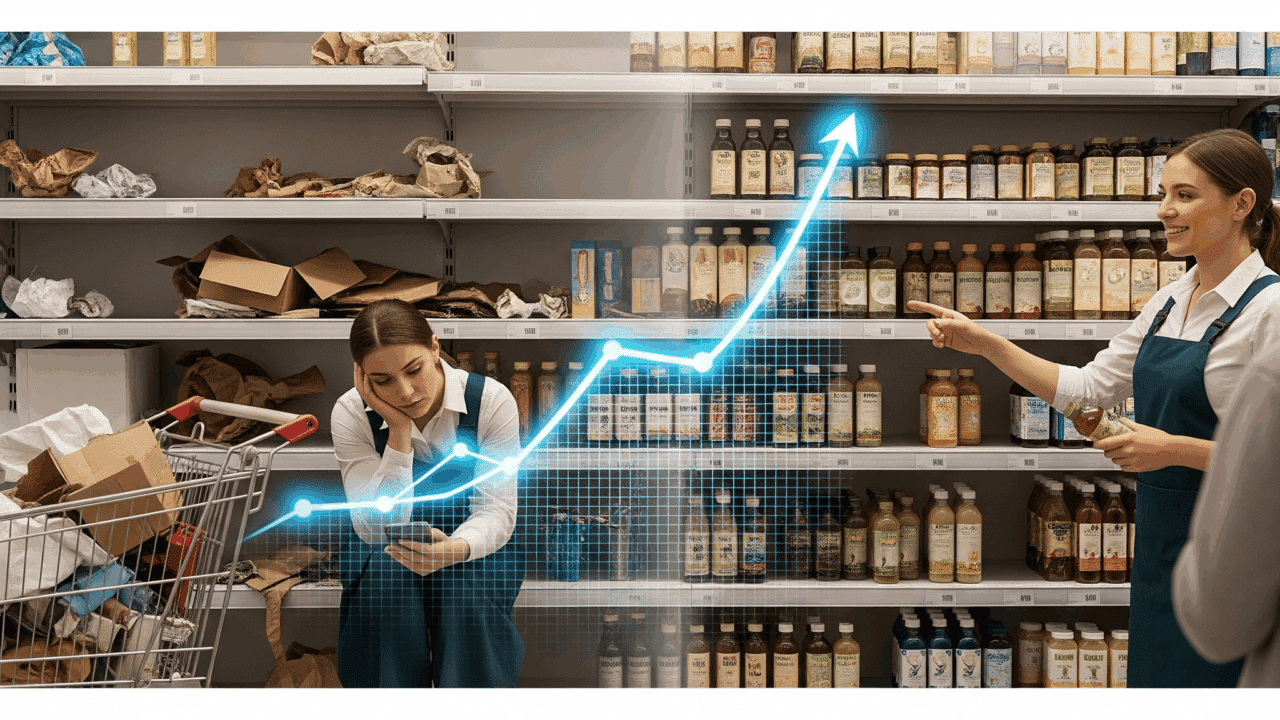
Retail business intelligence: Strategies for boosting sales and optimizing operations
Advancements in digital data solutions, analytics, and intelligence gathering are revolutionizing the retail industry. Today’s retail leaders are integrating new technologies and information methodologies to keep pace and generate sales in a fast-track world that has grown more demanding than ever before – particularly in addressing a new generation of customers with very different online and onsite shopping preferences.
What is retail business intelligence?
Retail business intelligence solution is one that does much more than compile mountains of data.
Rather, it finds ways to capture data that is uniquely relevant to your retail business, so you can glean actionable insights that enable informed business decisions to drive marketing, operations, management, product decisions, and customer experience solutions.
In other words, it’s not just about gathering volumes of information. In fact, too much data very well might muddy the waters further, leading you down wrong paths you don’t need to explore. Effective retail business intelligence, however, gets the right data in front of the right decision makers at precisely the right time. Simple as that. However, in practice, there’s nothing simple about developing a strong business intelligence program.
Where does your retail business stand in terms of data, analytics, and intelligence solutions? Is your mix of digital technology and customer insight solutions the right one? Or do you need a little help?
The advantages of proper business intelligence are invaluable to retail operations. They’re key to optimizing back-of-house functions, like inventory management, product mix, pricing structure, and field compliance. They also impact critical customer-facing programs, like store appearance, merchandising, employee performance, marketing, and the overall customer journey. It’s this ability to improve engagement with customers that many in the retail industry see as the golden ticket of good business intelligence.
In this blog, we’ll explore the process of gathering and managing retail business intelligence, applying this data as an actionable insight, and how retail business intelligence can enhance and transform the way you do business.
Retail business intelligence as a function of customer engagement
Better customer engagement leads to better sales – that part is pretty obvious. But how can you generate a compelling experience that will surprise and delight? How do you capitalize on the current shopping trends of your audience and prove to your customers that you are the retailer who has what they need…and want? There’s only one way to improve the customer journey and that’s by making an effort to get to know yours better.
Good intelligence provides the critical data and insights you need to tap into the mindset of your target customer. You can learn when they like to shop; what products they like to pair; whether they prefer shopping online or in stores; the expectations they have in a product; what brands they prefer; and so many other telling insights. With better and more insightful Business Intelligence, you’ll uncover actionable customer patterns you can use to create a better journey.
Leveraging analytics also allows retail businesses to train and task employees accordingly. In fact, real-time data tools are being used by sales teams at major retailers to pull up customer histories, habits and possible interest items instantly. These people represent the front line of sales. The more they know about your customers, the better they can connect and provide great service.
Customer benefits of business intelligence at a glance
- Better understand customers
- Gain a deeper understanding of customer needs and behaviors
- Better training and engagement
- Improve sales training and in-store engagement
- Better promotions
- Optimize product promotions through more accurate data
- More integrated
- Unify online and in-store shopping experiences
- Optimized merchandising
- Merchandise stores based on shopping patterns and trends
- More personalized
- Personalize the shopping experience for each customer
- Stronger loyalty
- Build lasting, loyal relationships through meaningful shopping journeys
How would you rate your retail analytics and intelligence? Are you uncovering important trends? Are you capturing the right data and turning it into greater sales? Are you even sure how to effectively measure your data and insights? Good news, there is help.
Business intelligence as a function of operations
Beyond the critical insights that data can reveal about your customers, it’s also being used to optimize retail from an operational perspective. From tracking and managing field team performance to developing more effective marketing and merchandising programs, digital data and analytics are proven to be a tremendous advantage.
For instance, intelligent data capture tools, such as mobile electronic smart forms, are enabling retail businesses to manage field teams with real-time effectiveness. By integrating mobile devices, retailers can track field team store visits, manage inventory, see store appearance, direct marketing and in-store promotions, and much more.
A quality retail intelligence solution will distill all your relevant data into clear and concise reports that make it easy to glean powerful insights about your business and help you make more informed decisions.
Operational benefits of business intelligence at a glance
- Manage field teams and ensure compliance
- Monitor the appearance of stores and product displays
- Streamline inventory management
- Manage in-store promotions and marketing programs
- Know what products are selling and what products aren’t
- Unify online and in-store sales channels and product selection
- Schedule and monitor staffing
Collecting data
Now that we’ve laid out the benefits of retail business intelligence for customers and operations, it’s time to break down the process of gathering this information. Effective retail business intelligence starts with gathering data from multiple sources. You cannot make informed decisions without accurate and comprehensive information to analyze.
Let’s review some key parts of collecting data:
- Know what data to collect
Retail data comes from various sources, from sales to employee performance. If you know your goals and what insight you’re trying to gain, you’ll know what data to collect. Always return to your retail business intelligence goals. How can data serve your bottom line? What data is going to drive your business processes for peak performance? - Use the right method
There are various ways to collect data for retail intelligence, such as point-of-sale (POS) systems, customer surveys, eCommerce tracking, and more. So, for example, if you’ve recently launched a new website campaign and want to track customer browsing habits, preferred products, and shopping cart abandonment rates, you’d need to invest in a method of tracking eCommerce analytics. This information can be used to optimize your website for better user experience, targeted marketing campaigns, and personalized offers. - Prioritize data quality
Data quality and accuracy are essential to your retail business intelligence strategy, as they ensure the data you’re collecting and analyzing is validated and consistent. To prioritize data quality, ensure you have a rigorous quality control process and dedicated team members who regularly clean and maintain data. When outliers arise or issues pop up, resolve them before they become more significant problems that impact your bottom line. - Ensure data security
Security and privacy are another critical aspect of working with data. Data breaches and leaks can cause significant financial loss and damage a company’s reputation, so it’s important to ensure sensitive information is never compromised. Data security is more than just technological solutions. In addition to firewalls, encryption, and secure data storage systems, proper access controls and user authentication procedures should be in place to ensure only authorized individuals can access sensitive information. Formulating and enforcing data handling policies helps reduce the risk of mishandling or leaking data by careless or malicious users.
Analyzing data
So now you’ve formulated an accurate, secure process for data collection. The next step is to use this data to produce actionable insights and analysis that drives decision-making.
The key to making the most of data analysis resides in selecting the right tools to analyze and present findings in an understandable manner. There are many tools for analyzing data, and the right choice depends on your objectives, available resources, the size of your data, and more. Here are some common forms of data analysis:
- Data visualization
Data visualization is the representation of data using graphics like charts, infographics, and plots. These visual displays can communicate complex insights in a way that’s understandable to a wider audience and gives teams the tools they need to form actionable insights. - Predictive analysis
Predictive analysis combines data modeling and mining techniques to predict future outcomes. As a retail company, this may mean using data to predict a future customer trend that requires you to pivot your strategy to target a new audience.
Whatever form of data analysis you perform, it’s essential to use these results to identify trends and patterns in your data that allow you to manipulate future outcomes. Detecting patterns empowers businesses to react proactively to changes, capitalize on opportunities, and mitigate threats. Further, this trend and pattern analysis can be used to inform business decisions. If you forecast a slower spring season for sales due to economic fluctuations, you can use this predictive insight to adjust pricing and attract customers.
To identify trends and use this insight to make business decisions, you must understand your target audience. This is where it’s critical to use customer segmentation. By breaking down your customer base into groups based on characteristics like demographics, geography, and behavior, your business can tailor products and marketing efforts to better resonate with each unique audience segment. Customer segmentation enables companies to allocate resources more efficiently and maximize return on investment.
To properly understand your audience, it’s also important to perform a competitive analysis. By comparing your organization’s strengths and weaknesses to those of your competitors, you can identify potential market gaps, differentiate your offering, and uncover growth opportunities. Data can help assess product or service features, pricing strategies, marketing tactics, and customer satisfaction rates. Understanding where your organization stands compared to competitors provides valuable insights that can shape your business strategies and help close the gap between you and market leaders.
Applying insights to sales strategies
Once your data has been collected, analyzed, and understood in the context of your consumer base, you can begin crafting sales strategies that reflect your insights. The strategies you implement will vary depending on your goals and data, but some possible outcomes include:
- Creating personalized marketing campaigns
In some cases, you’ll want to use your retail intelligence to personalize marketing campaigns that target unique audiences. This strategy can be used for in store experiences or eCommerce. The goal of personalized campaigns is to make consumers feel seen and listened to and to reflect their interests with tailored marketing campaigns. - Identifying cross-selling and upselling opportunities
Sometimes, retail data exposes opportunities your team has never considered. You can use this insight to cross-sell or upsell products and services and increase business value and revenue. - Optimizing store layouts
The in-store shopping experience should feel personalized to your target audience. Once you have the data to reflect consumer behavior and preferences, you may use it to optimize store layouts and product placement. By enhancing the in-store experience, you seek to increase sales and enhance your brand identity so customers feel listened to and see their needs and preferences reflected through the shopping experience.
Using data to improve operations
The use of retail business intelligence doesn’t stop with your customer base. These actionable insights can also be used to improve your operations, increase efficiency, and enhance company culture. Here’s a look at how data can be used to improve operations:
- Manage inventory levels
Data often gives you a look at product demand, which allows you to forecast current and future trends. In doing so, you can effectively manage inventory levels to ensure customer needs are met, and ensure your team isn’t using time and resources in areas that aren’t in demand. - Reduce waste and improve efficiency
If you more effectively manage inventory, you can reduce waste and streamline your supply chain so it’s organized and efficient. By simplifying and streamlining the supply chain, your team will reduce wasted time and resources and focus on delivering value where it matters most. - Enhance customer experience and service
The more your team understands your customers, the better equipped they’ll be to provide outstanding service. Use your data insights to empower your team to do their best work and use these insights to make improvements wherever they can. - Human resources analytics
Retail business intelligence can be applied to your human resources processes and may identify areas for improvement. Be open to acknowledging these gaps and seeking opportunities to change and create a better company culture. - Social media analytics
Never underestimate the power of social media in your retail operations. In addition to enhancing the in-store experience, your team can use social media analytics to understand customers and company culture better. By understanding these insights, your team can better embody your brand values to create a personalized experience for shoppers. - Real-time analytics and IoT
Real-time analytics applies logic to data to make real-time decisions quickly. So, for example, your team may use data to price match an item in the store based on a customer’s offer. Your team can also use the Internet of Things (IoT), a network of physical objects that use sensors and other technologies to collect and exchange data, to improve operations in real time. The possibilities of data technology are seemingly boundless when your team is equipped with the skills to use them.
As technology continues to grow and tools like artificial intelligence (AI) are increasingly used, it’s important to stay competitive. To do so, you need to partner with the right teams who can empower you to move into the future of retail.
Finding a data and analytics partner to help drive retail business intelligence
There’s no question that today retail is being powered by innovation and information. It’s not a question of whether or not you need to leverage intelligence, it’s a matter of how you plan to do it.
The reality is, most brands and retail businesses simply aren’t equipped to keep up with these new technology and customer insight trends on their own. This would require substantial investments in software and personnel to integrate new solutions across online and brick-and-mortar channels.
Fortunately, there are retail management companies, such as T-ROC (the Revenue Optimization Company, who have made it their mission to leverage people and technology solutions to drive sales for major retailers.
Founder and CEO, Brett Beveridge, explains the intelligence value T-ROC brings, “The landscape of retail is very different than it was just a few years ago. For our clients, we’re integrating tools like digital data capture technology, AI, robots, mobile customer engagement devices, in-store displays and sensors, and we’re combining these with data we get from things like mystery shopping and surveys to give our clients a study of their customers, marketing, operations and really every aspect of their business on a level that was never before possible.”
TROC is the leading provider of premier staffing outsource, software, managed technology services, and consumer insights for the top global brands, retailers, manufacturers, service providers, and distributors. The company’s distinctive solutions address the entire lifecycle of brick and mortar brand and retail operations by combining retail expertise, best practices, and technology to help its customers achieve sales and operational excellence as well as a sustainable competitive advantage. As a Retail 4.0 thought leader, T-ROC enables companies with high-value products in the physical world to thrive through the digitalization of the physical shopping experience. To learn more about T-ROC, visit www.trocglobal.com
Frequently Asked Questions
How is business intelligence used in the retail industry?
Business intelligence can be used in retail to enhance the in-store experience, improve an eCommerce site, create targeted marketing campaigns, and more.
What is retail business analytics?
Retail analytics refers to the process of tracking business data like sales, customer behavior, and in-store shopping patterns. The goal of this insight is to allow companies to make informed, data-driven decisions.









